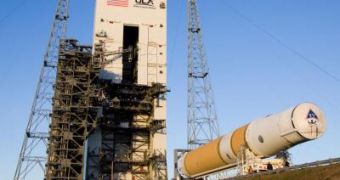The new Geostationary Operational Environmental Satellite GOES-P is currently undergoing its final launch preparations in Florida, the United States. The spacecraft will be added to the GOES constellation of satellites, which is operated by the US National Oceanic and Atmospheric Administration (NOAA). The craft itself will be launched by NASA, which will then surrender control of the vehicle to the weather agency, as soon as the orbital commissioning and testing phases are over. The new launch will come just a few months after the addition of the GOES 14 to the orbital satellite constellation, on June 27, 2009.
“Our team has made incredible strides in the past few weeks. Just coming off the successful launch and check out of GOES O, everyone is ready to go again and we are anxious to see GOES P added to the NOAA constellation,” the GOES N-P Deputy Project Manager, Andre Dress, explains. The expert is based at the American space agency's Goddard Space Flight Center (GSFC), in Greenbelt, Maryland. According to the NASA flight manifest, the Delta IV rocket that will carry GOES P into orbit will take off from Launch Pad 37B, at the Cape Canaveral Air Force Station, in Florida. The facility is located just miles away from the two launch pads of the Kennedy Space Center (KSC), the home of the American space-shuttle fleet.
The new spacecraft was initially processed at the Titusville, Florida-based Astrotech Space Operations, but has since been deemed ready for flight. Its Payload Attached Fitting (PAF) was also established to be in good condition on December 18, 2009, and, on December 22, functional testing of the satellite revealed no glitch. Some 12 days ago, the United Launch Alliance (ULA) Horizontal Integrating Facility received the first and second stages of the Delta IV rocket, which were mated with each other over the next week. On January 13, the rocket was placed at Launch Pad 37B, awaiting further readiness and functional tests.
The new spacecraft is scheduled to blast off on February 25, 2010, just a few days after space shuttle Endeavor lifts off from the nearby KSC, on one of its last two journeys to the International Space Station. NOAA has another four satellites planned for the GOES constellation. Of these instruments, GOES-R is targeted for launch in December 2014, while GOES-S will be boosted to orbit in April 2016. The goal of the constellation is to forecast weather with great accuracy, track all the major storms forming in the Atlantic and Pacific Oceans, and also provide more possibilities for meteorological research.

 14 DAY TRIAL //
14 DAY TRIAL //